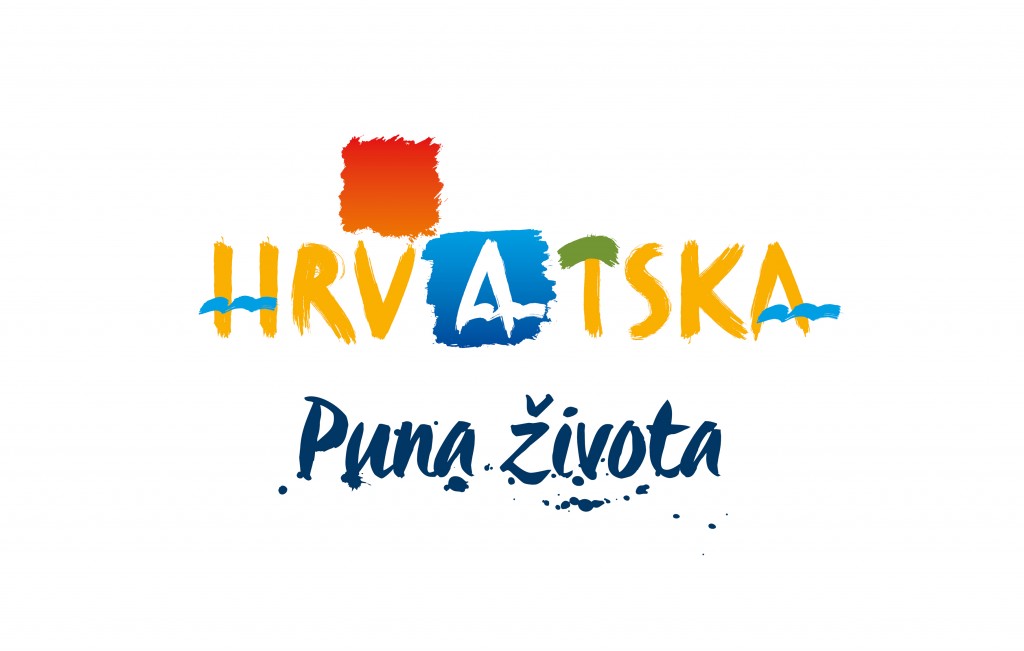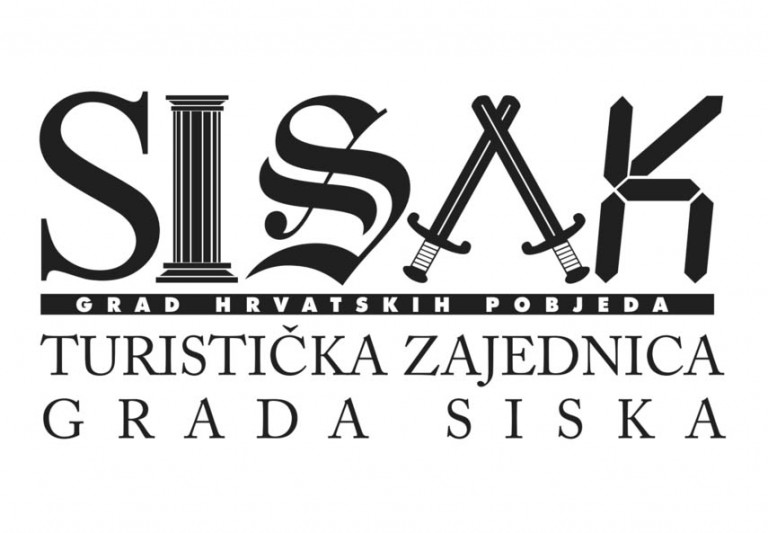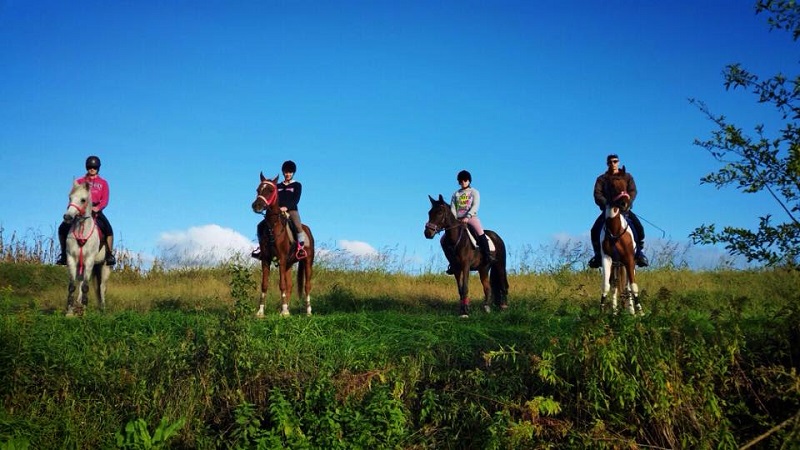Destination worth visiting – take a boat ride or cycle through Sisak and it s surroundings
Did you know?
During the 18th and 19th century Sisak was the largest Croatian inland harbor, and river Kupa hosted up to thousand ships.
The first river steamboat in Croatian history was Sloga from Sisak.
The first Roman emperor Augustus, who conquered Segesta, issued a proclamation to conduct the population census, due to which Mary and Joseph went from Nazareth to Bethlehem.
The oldest football club in Croatia was established in 1906 in Sisak by the name of Segesta.
At the estuary of Kupa into Sava, proudly stands the witness of the most important Croatian victory over Turkish invaders in 16th century - Old Town fortress.
The first railway line in Croatia was built between Zidani Most and Sisak via Zagreb.
Journey through Sisak-Moslavina County

We have visited the city of Sisak, a historic city on three rivers and its marvelous surroundings. City is bordered by the dense forest at the edge of which you are calmly greeted by the magnificent Old Town. It gives you a warm welcome and reveals a wealth of historical heritage, in the irresistible whirl of miraculous nature.
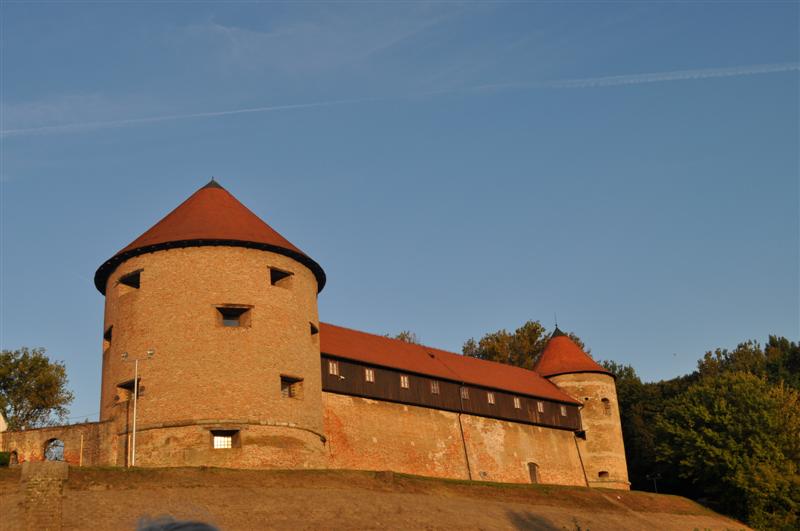
City of Sisak owes its unique position to three rivers: Kupa, Sava and Odra. Kupa is the ultimate symbol of Sisak and also a stage for numerous events throughout the year. There are few cities in Croatia whose inhabitants can pride themselves with the fact that river flows through the city center where you can swim, paddle, dive, or take a ride on a boat or ship. You can find out more about the secrets of Kupa river in this article.
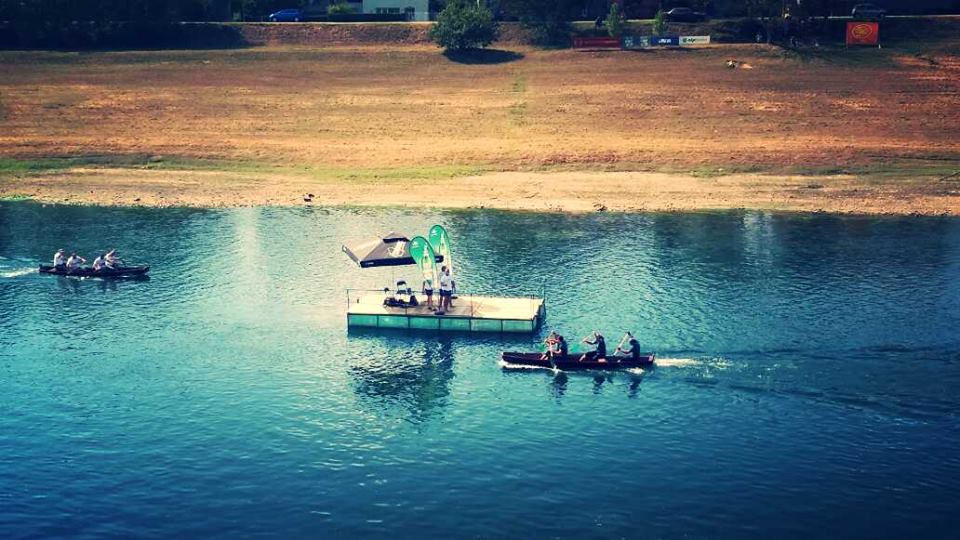
(Detail from Kupa nights, photo: Sisak Tourist Board Facebook page)
But let's start from the beginning. We started the journey with the visit to village Krapje in the heart of Lonjsko polje nature park.
We are thankful to professional guides from the nature park who gave us a lecture about this unique area.
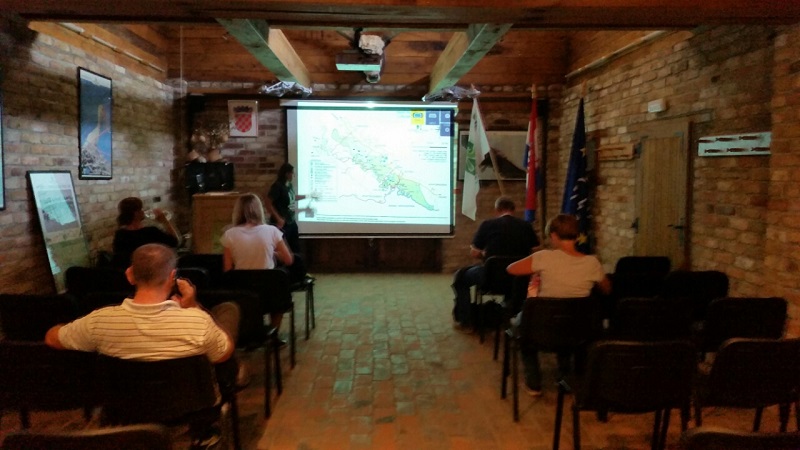
Birds, flowers, sandbanks and traditional wooden houses form one of the most picturesque landscapes in Croatia, it feels as if we wandered into one of the fairytales from Ivana Brlić Mažuranić or H. C. Andersen.
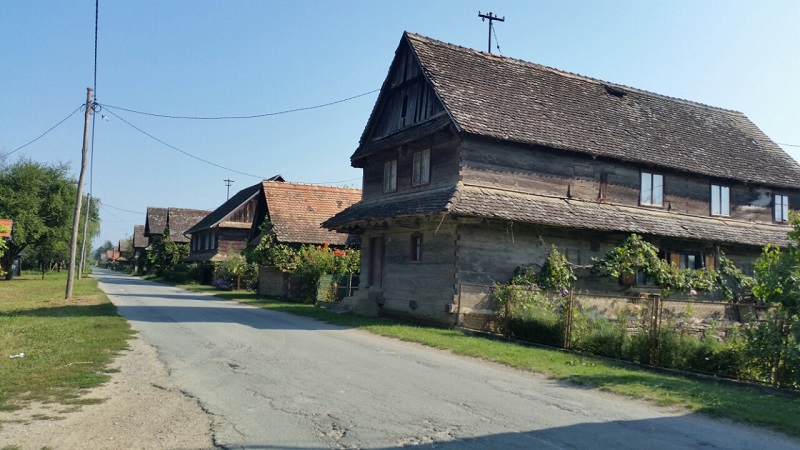
Lovely village of Krapje is rich with valuable traditional architecture of national significance and the only village in Croatia with the status of architectural heritage site. Since 1995, it has become a tradition to celebrate the day of European heritage.
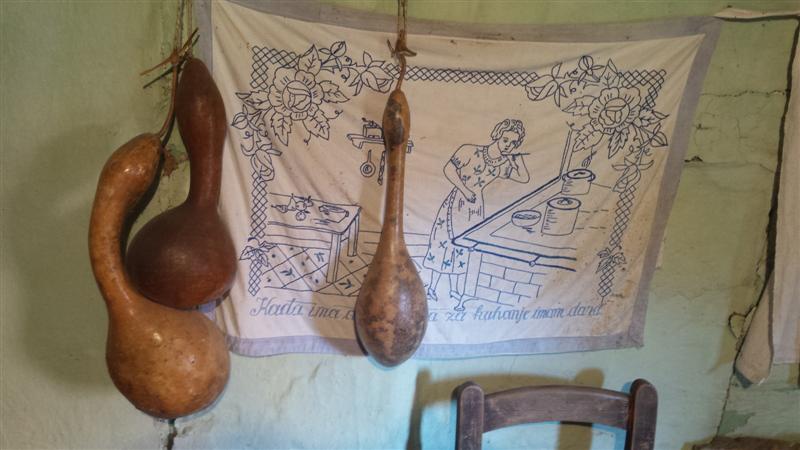
One of the things especially interesting to us was the traditional house construction from natural materials (oak), perfectly integrated into natural surroundings. Diligence, craftsmanship and modesty that draw its roots from poverty of older generations, preserves the heritage of this region in a special way.
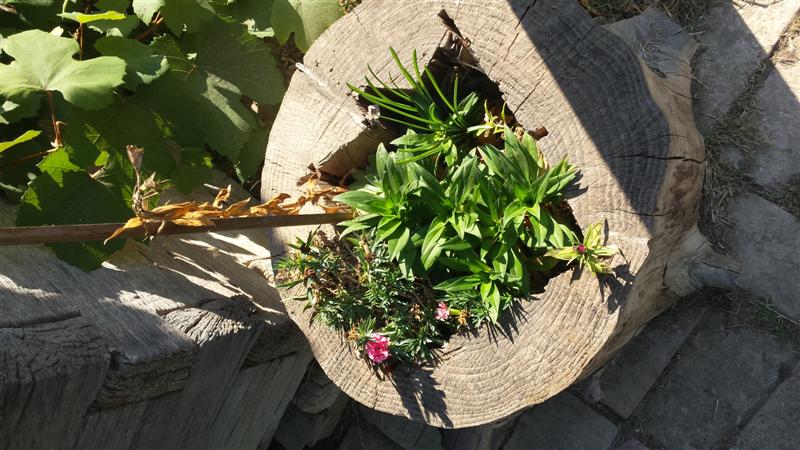
Lonja Field – take a boat ride through the natural paradise
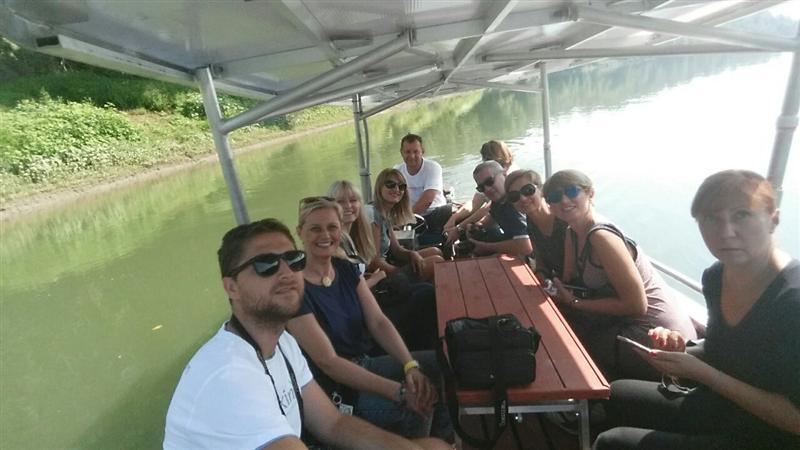
After a tour around the village and around the soft sandbank of river Sava, we were taken for a ride with solar boat along the nature park Lonjsko polje.
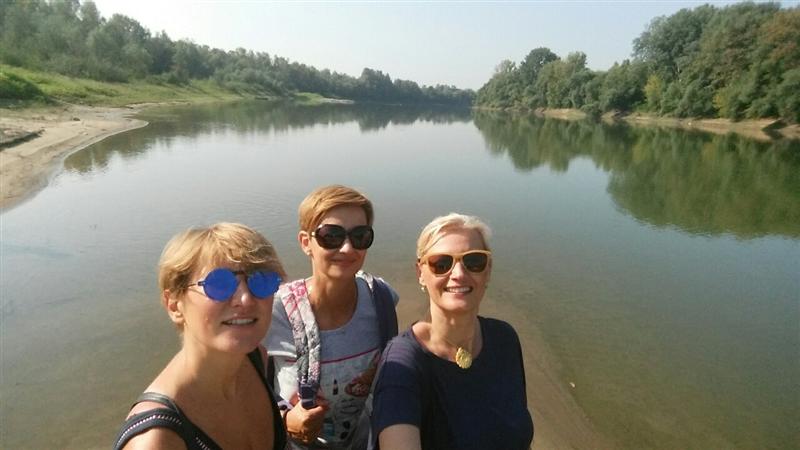
The topography of this area was shaped by the river Sava throughout number of years. It has shaped the coastline, creating an unique landscapes which are enjoyed today by the visitors and residents of this area. If you want to know more about the old way of life in this area, visit the specially designed theme pathway that connects the northern part of Lonjsko Polje with Moslavina wine-growing hills and Sava River.
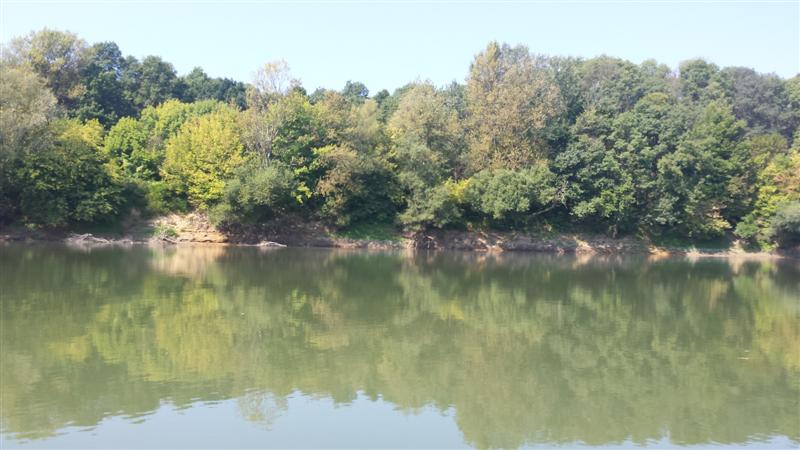
So we found out that Nature park Lonjsko polje contains one of the largest complexes of naturally preserved flooded lowland forests in Europe and beyond. Animals, plants and people have been living here for centuries in a happy symbiosis. And everything gives you a feeling of tranquility and peace. It almost seemed incredible that we left a bustling metropolis barely an hour ago.
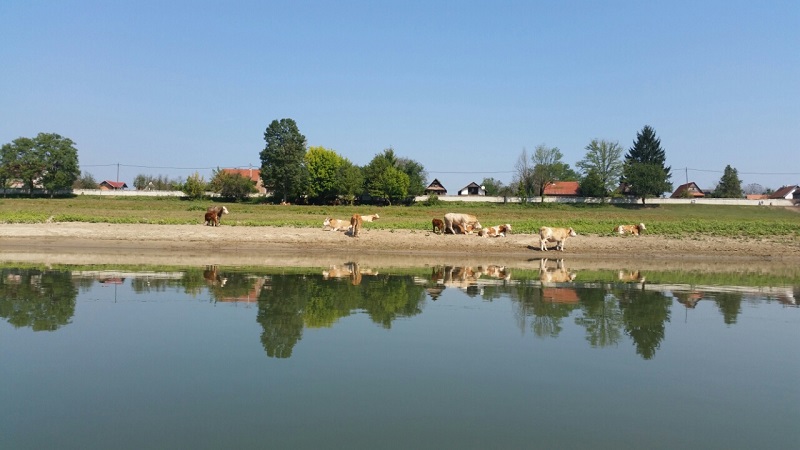
One of the characteristic trees in this ecosystem is famous "Slavonian oak", well known in Europe for its quality. Of many plant, fish and animal species, we must mention storks, the greatest attraction you will be able to see up close, if you visit the village of Čigoč.
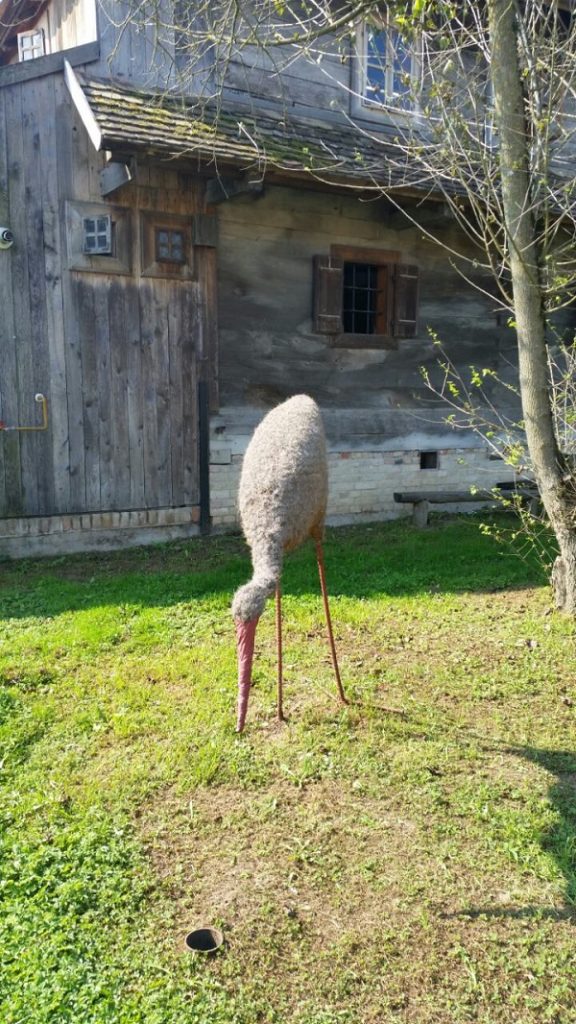
This pearl of Croatian heritage is located on the right bank of Sava river, along the river branch called Silence (Tišina). Due to the large number of nests on wooden roofs of Posavina houses, Čigoč village was proclaimed the first European village of storks in 1984. And storks love best to nest exactly in Čigoč, given the fact that here they nest 3,8 chicks per pair on average!
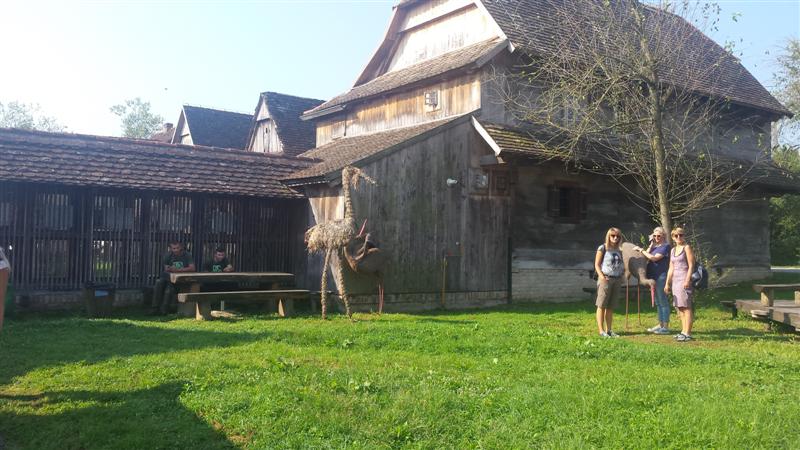
Since the weather served us well, we could see the fairy-tale ambience and enjoy the utter silence disturbed only by the sounds of birds. Trees and wooden houses, flowers and river nearby, have formed the peculiar composition of colors, sounds and smells.

The river lured us to swim. Sandbanks called us to stretch our towels on them. But we had a lot more places to visit.

Ethno village Old Lonja - one of the most beautiful destinations of our journey
After Krapja, we arrived at the ethno village Old Lonja. There we were blinded by hundred shades of green, something that can't be seen on streets of Zagreb. We were thrilled by the harmony, peace and quietness of this rural household, a place that has everything you need for the ideal vacation in nature.
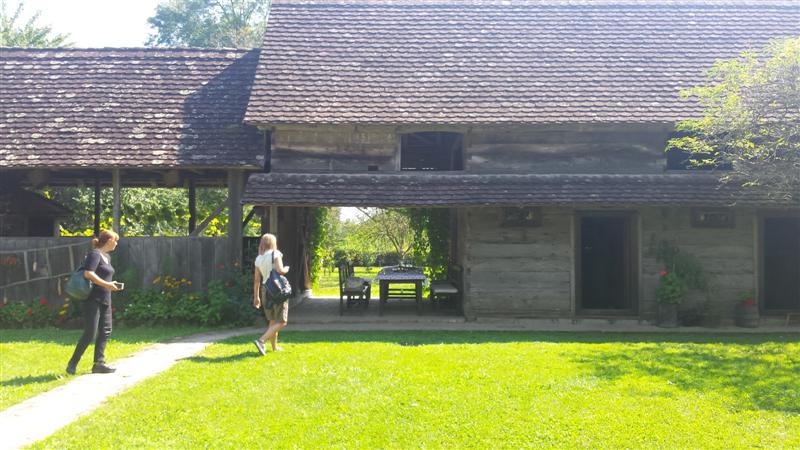
Friendly hosts have greeted us, offered us wine and world-class liquors, roasted fish and local meat, which catapulted us into orbit of gastronomic enjoyment.
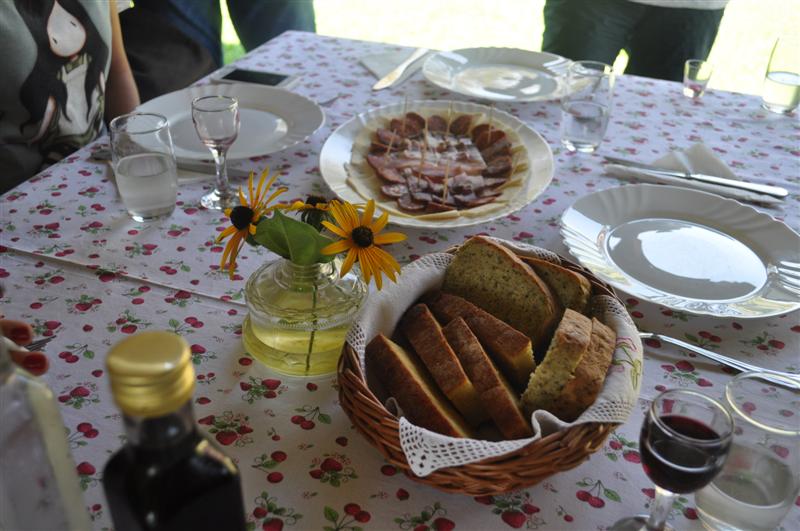
And tempted us to stay there a day or two or longer. (or until they send us away).
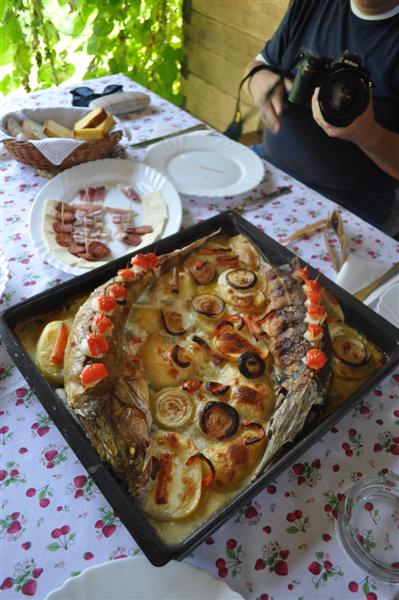
If you are looking for a rural household with affordable prices but incredible natural beauty, charm, natural harmony and fine food, be sure to visit this farm. It is just an hour away from Zagreb, and hosts can organize tours on demand and provide you with accommodation.
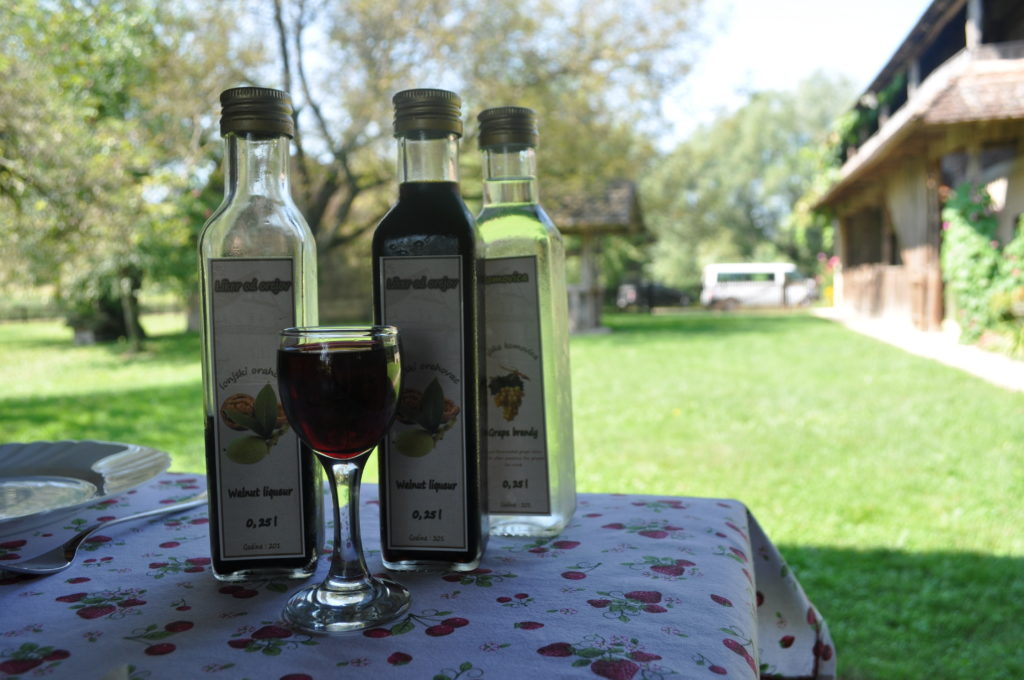
We moved on towards the ethnographic collection of Sučić family. Invigorated by local food and very happy, we marked the Old Lonja in our excursion schedule as a must see destination for the future.
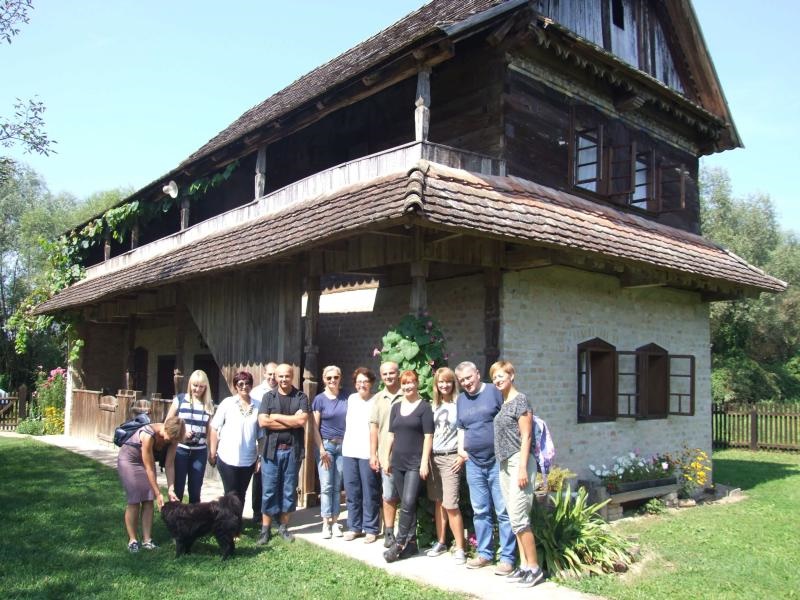
Ethnographic collection of Sučić family
We visited the ethnographic collection of Sučić family which originated from preserving and collecting traditional objects and today has about 700 different items related to life and economy of this part of Posavina. We sow a real small ethnic treasure; from woodworking tools, farming tools, tools for fishing, transport vehicles, to various practical items related to daily life in the household. Folk costumes, towels, souvenirs, everything is created from natural materials collected or made by the family for years, and their impressive collection has been added to the list of Croatian cultural heritage.
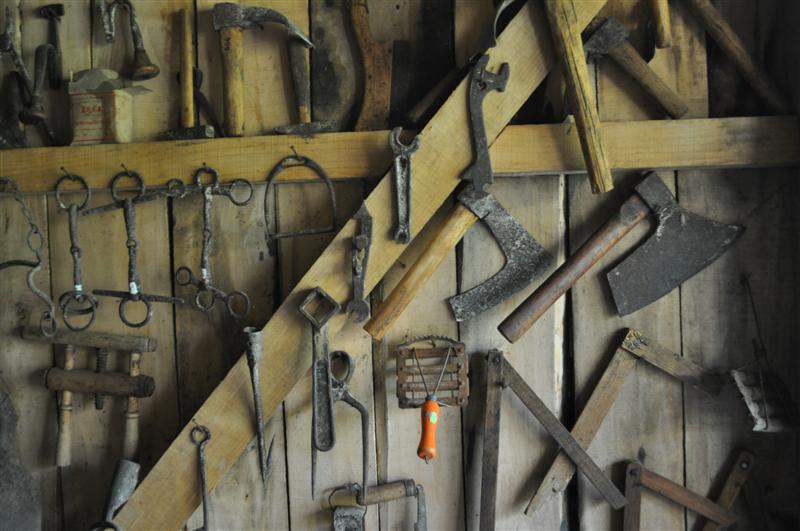
Traditions Čigoć
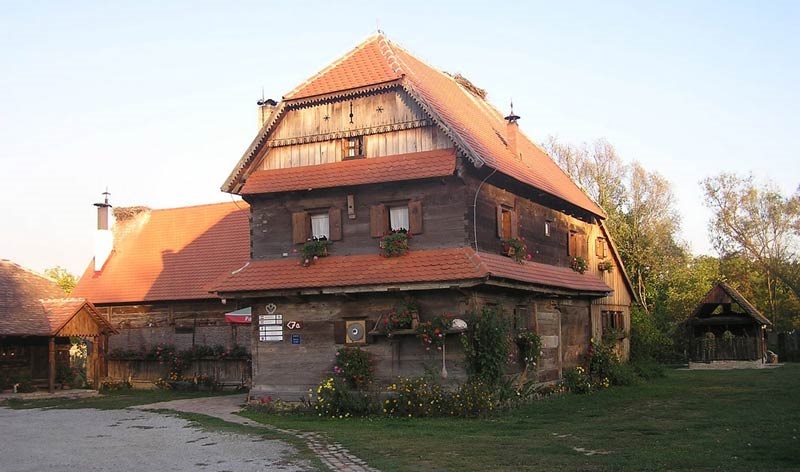 foto: Tradicije Čigoć
foto: Tradicije Čigoć
We have also visited the famous Traditions Čigoć, another tourist attraction in this area. It is a well known for its traditional dishes from Posavina, of which we recommend their deer goulash, fish paprikash and "Posavina pot". With each dish they include special delicacy "Čigočica" (flatbread from the bread oven filled with homemade cheese and cream).
It is customary to hear some stories about tradition of river fishing from the hosts while tasting the carp and perch fishes prepared by their own recipe. Uniqueness of this place has been discovered by the campers, and we have unanimously agreed that they could not find a better place for absolute rest.
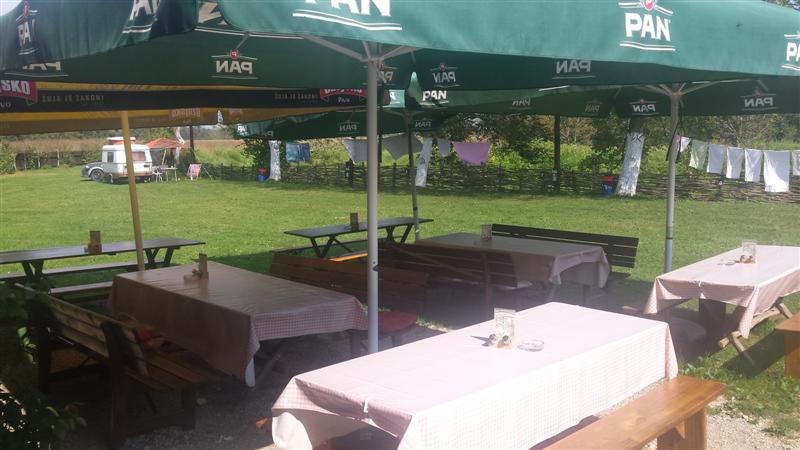
Sisak city - unusual and unconventional urban area that is easy to love
We came at the start of the three-day event, well known as Kupa nights, of which you can read in more detail on this link. We were taken on a guided tour (organized by the Sisak Tourist Board) through the city. The city is full of greenery, on each step you can see magnificent trees, parks and flower beds.
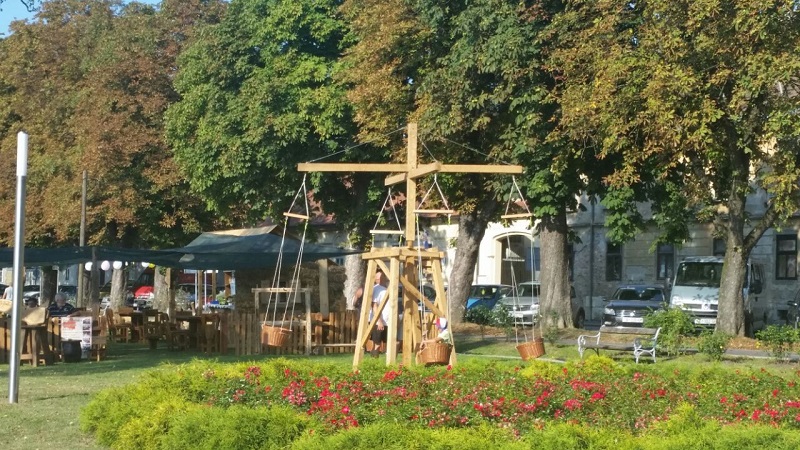
Kupa nights have certainly taken our full attention. The city was all about the boats, aero show spectacle and other interesting programmes.
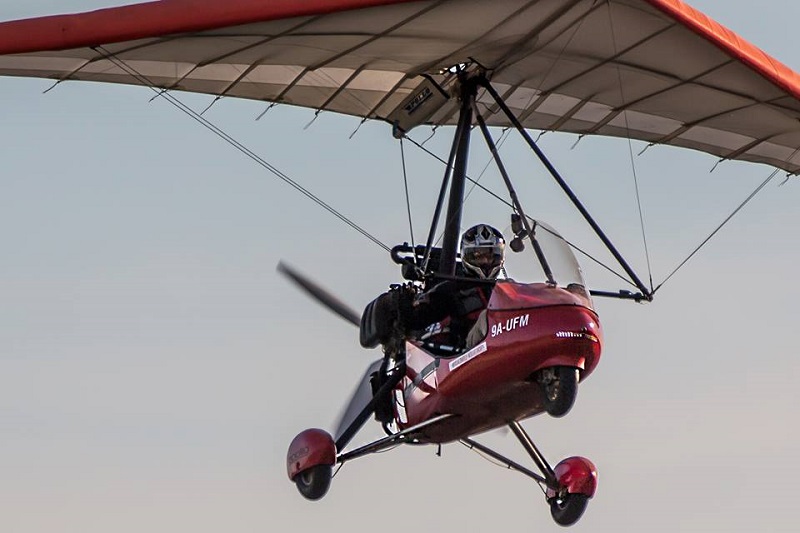
Aero show best captures the spectacle that are this year's Kupa nights (photo Damir Pahić)

And a little more aerial acrobatics (photo Damir Pahić). The one who says there is no life in Sisak, has obviously never visited it. And he definitely should.
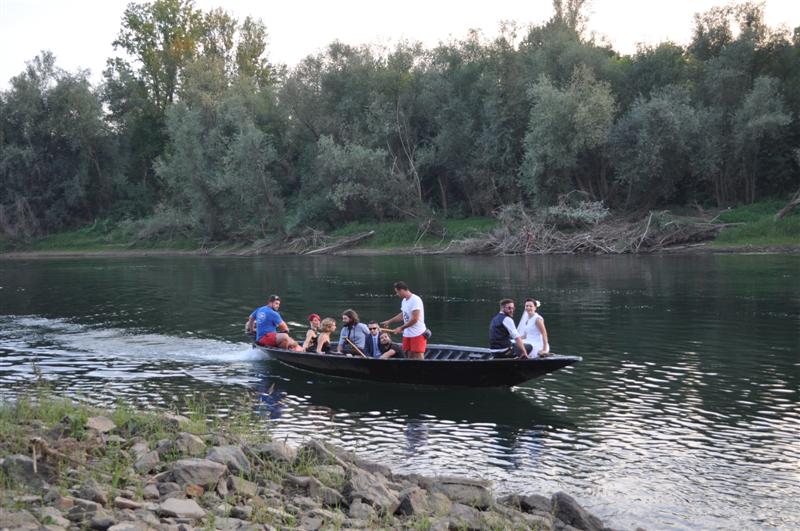
Out of other landmarks, whose description would require a whole new text, we will only mention the "Re-think" murals, Old Bridge - Military Sisak, Mali Kaptol, City Hall, Sculpture Park, Veliki Kaptol, Old Bridge, the Basilica of St. Quirinus, Sisak historic ring...
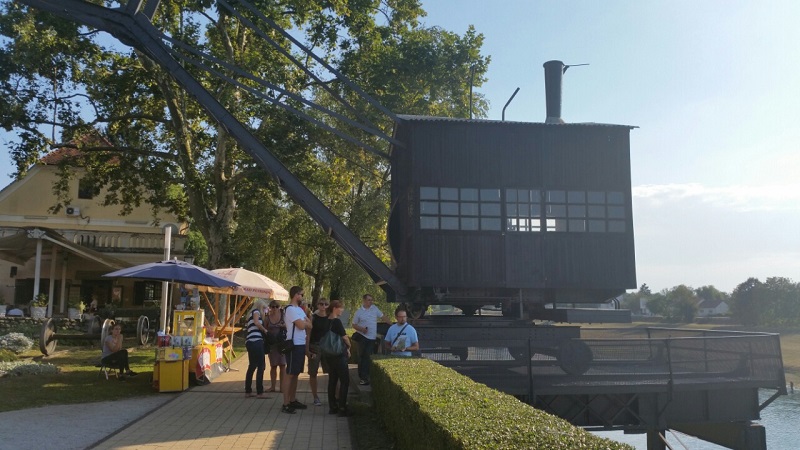
We have also visited the wonderful Old Town where we were transported in a relaxed and happy atmosphere of a Neretva river boat from the Boatmen Association of Sisak (Udruga lađara Sisak). By a pure chance we also witnessed the Sisak wedding scene that conjured up the spirit of this city - a city that seems to be pretty easy to love.

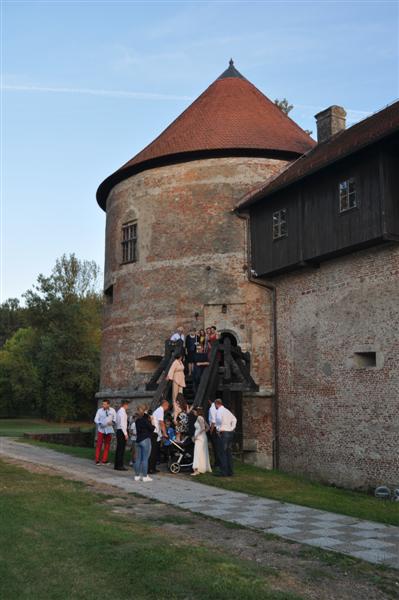
We ended our trip with cycling through Sisak, which is literally covered with cobwebs of bicycle paths through which we were guided. Sisak and surroundings are mecca for cyclists and active holidays, and we experienced that personally while driving through the entire city. It is difficult to single out whether it is better to ride in Neretva river boat or to cycle through Sisak, so we recommend you to try both.
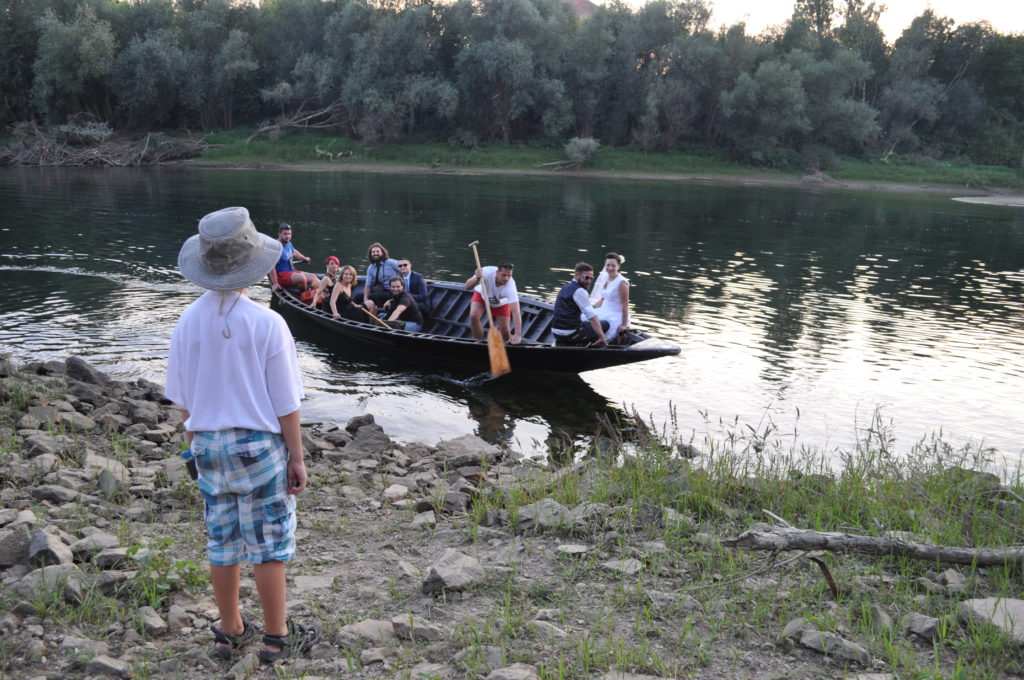
We left full of impressions of the city that is in reach from Zagreb with just an hour drive. With its necklace of countryside households, with its unique nature park and the enchanting beauty of natural and architectural heritage, we are determined to pay another visit. And to make it as soon as possible. Because this destination definitely has a lot to show, throughout the seasons.
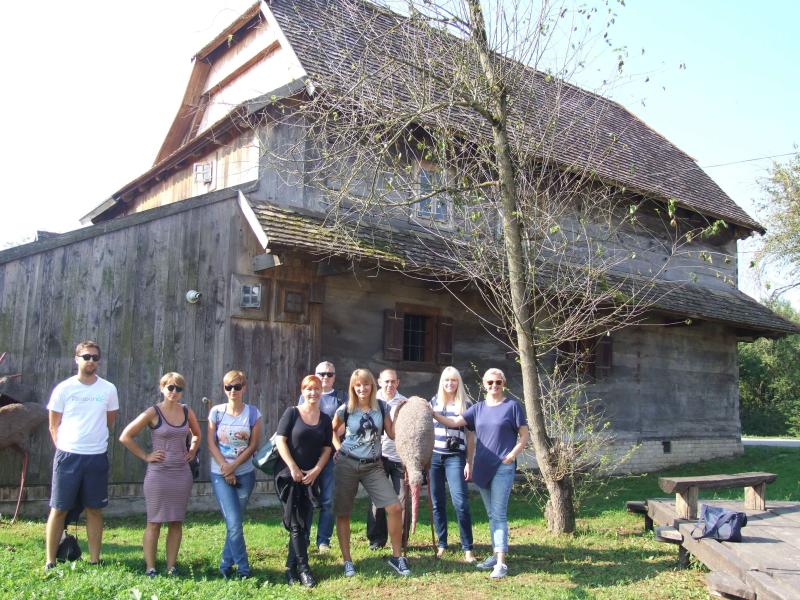
Text and photos: Croatia Hotspots
Photo Aero show - Damir Pahić, taken from the FB page Tourist Board of Sisak
Equestrian tourism – an exquisite tourist attraction of Bjelovar-Bilogora county
By developing new forms of tourism in Croatian inland, some destinations have improved their offer and took it a step further from classic sightseeing tourism.
Development of agro-tourism with rich choice of domestic food and wine is complemented with new forms of tourist products and offerings. For example, there are ten active equestrian associations in Bjelovar-Bilogora county and around the same number of "horse welcome" agritourism estates.

Bjelovar-Bilogora county is also a host for national and international competitions in endurance riding. Starting this year, in collaboration with the international equestrian association ENGEA, first 8 certified guides for tourist horse riding have been registered in this area.
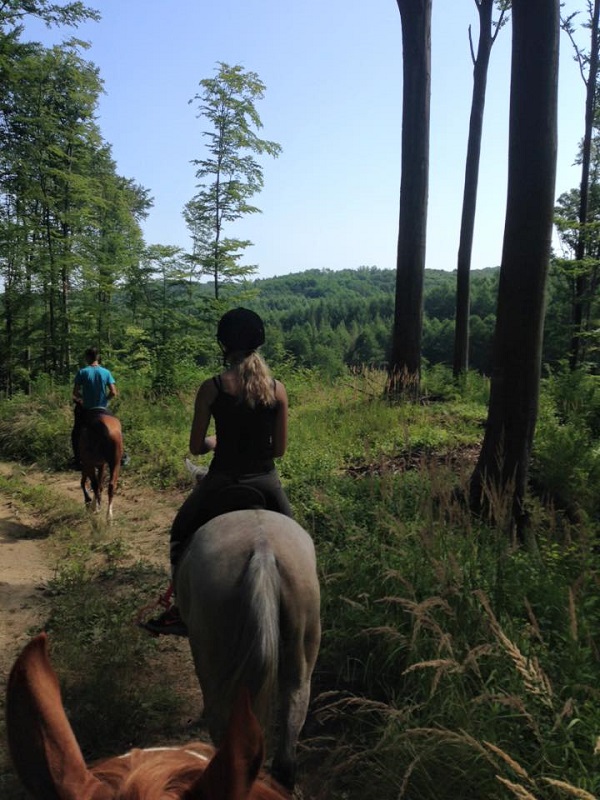
It is also an interesting fact that Bjelovar-Bilogora county area contains 198 kilometers of marked equestrian trails, which connect it with neighbouring Virovitica-Podravina and Koprivnica-Križevci counties. Equestrian tourism became a part of standard tourist offer in this area, as a result of synergy between the work of Tourist Board of Bjelovar-Bilogora county, enterpreneurs in private sector and professional associations. There has been a significant increase in tourist traffic throughout 2015, which is further improved with new complex tourist products including active vacation with emphasis on equestrian tourism.
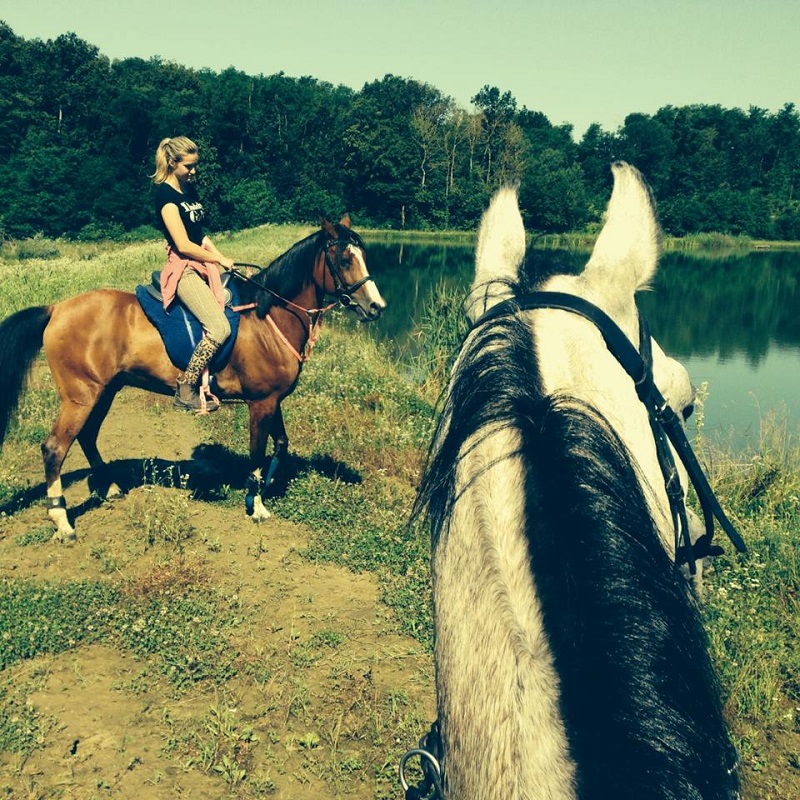
Within this initiative, Bjelovar-Bilogora county will host the Balkans championship in long distance riding in September 2016, in cooperation with the Croatian Equestrian Federation.
International equestrian tourism convention was held in May.

Bjelovar-Bilogora county has recently hosted an international convention of equestrian tourism, which took place between 13 and 15 May 2016 at several locations throughout the county. In the meeting of professionals several discussions were held - about rural development through system of equestrian trails in Italy and Croatia, safety on riding trails and the development of inland tourism through the prism of equestrian activities. In addition, an international team of experts carried out the inspection and certification of equestrian trails in county, which included these trails in international listings of equestrian tourist offer.
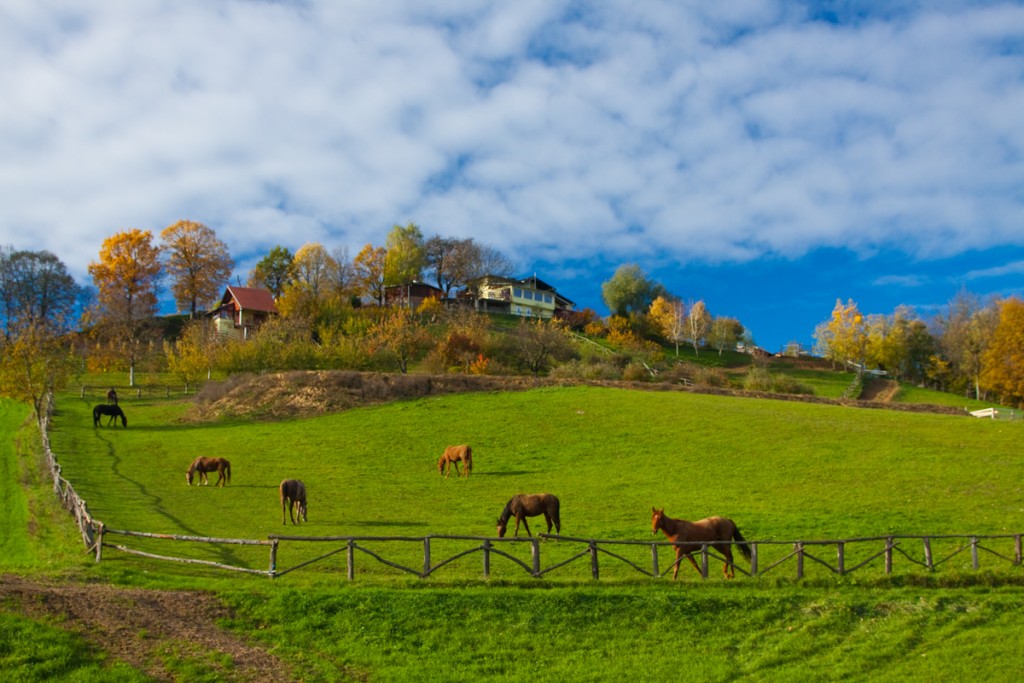 Agritourism estate "On a little hill" – family farm Vlajinić
Agritourism estate "On a little hill" – family farm Vlajinić
This three-day event is important for all agritourism estates - family farms on Bilogora route, which have been intensely developing their attractive offerings for guests from Croatia and all over Europe. This is the way they can further promote their thematic tourist products - from enogastronomy to cultural and active tourism.
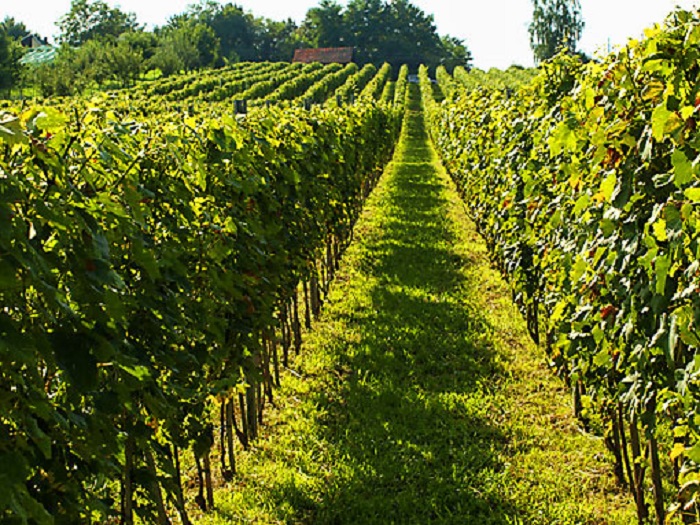 Photo: Wine road of Bilogora
Photo: Wine road of Bilogora
Hotspots recommendation:
On the magical slopes of Bilogora hills near Bjelovar, there is an excursion site and a wine shop Vinia situated on Šapić family farm.
It is located four kilometers from Bjelovar city in the direction of Đurđevac. The precise location of this family farm is a small suburban place named Puričani.
Visitors can enjoy the ambiance of a fairy tale. They can also expect a number of different creative programs for standard holiday or active holiday, all held in the idyllic rural atmosphere. Programs include the offer of traditional dishes from this region, tasting of local wines from Bilogora hills, wine cellar tours and terrain horseback riding.
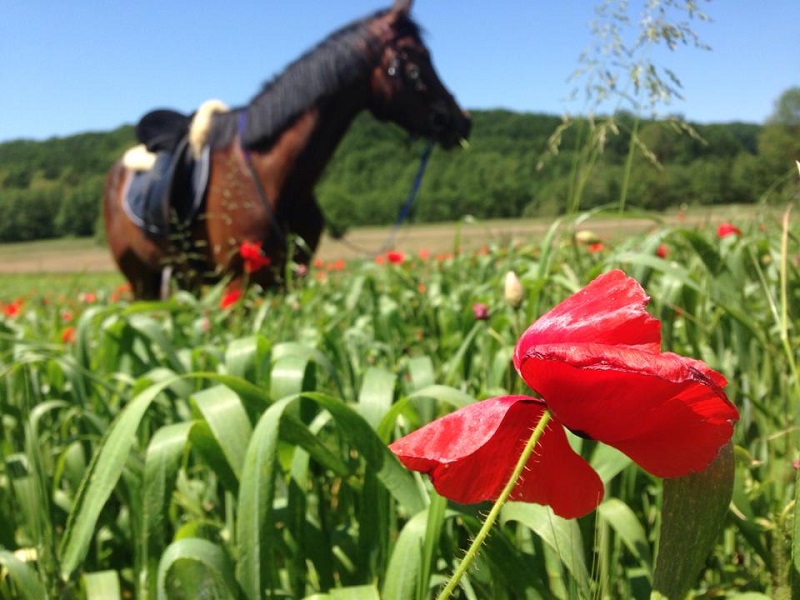 Terrain riding on family farm Šapić – excursion site Vinia
Terrain riding on family farm Šapić – excursion site Vinia
If you have horse riding license, if spending time in nature fills you with peace and harmony, if horses have been your love ever since childhood, we highly recommend this idyllic estate. Horseback riding can be done with or without the presence of the coach, but for the official tourist routes of Bilogora you will be escorted by a guide. For groups of riders and multi-day tours on the family estate Šapići, you will be provided with all the necessary infrastructure (accommodation in double bedded rooms, restaurant, parking for campers, catering on the field).
There is also a riding school for children and beginners with expert guidance provided.
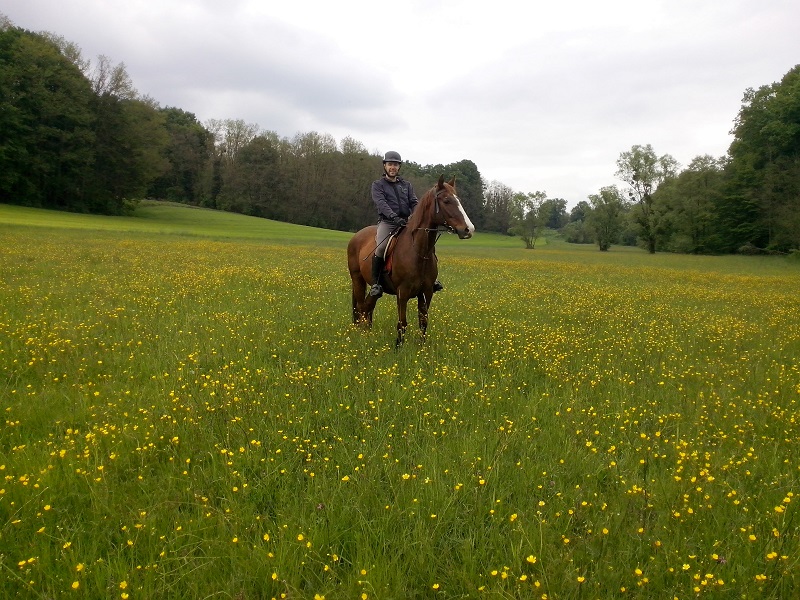
By clicking on this link you can find a brochure with more info about the tourist offer of Bjelovar-Bilogora county and the richness of its diversity. Discover your own piece of green paradise, feel the tranquility and peace under the shade of old trees with the wind in your hair. Later you can invigorate yourself with top quality locally grown food and wine. Many consider this to be the ideal recipe for a summer happiness, far from the summer throngs and the tourist crowds.
Also, do not forget there are agritourism estates with tasty local delicacies, such as family farm and excursion site Mihoci – the door of Bilogora, which await for you on riding routes.
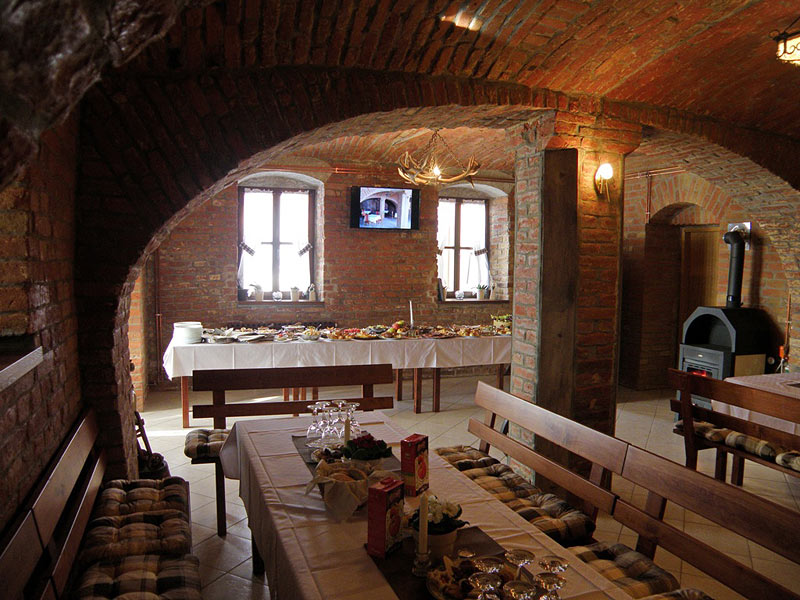 Photo: Restaurant Mihoci
Photo: Restaurant Mihoci
Everything you need to know about the equestrian tourism offer in this county, you can find on this link.
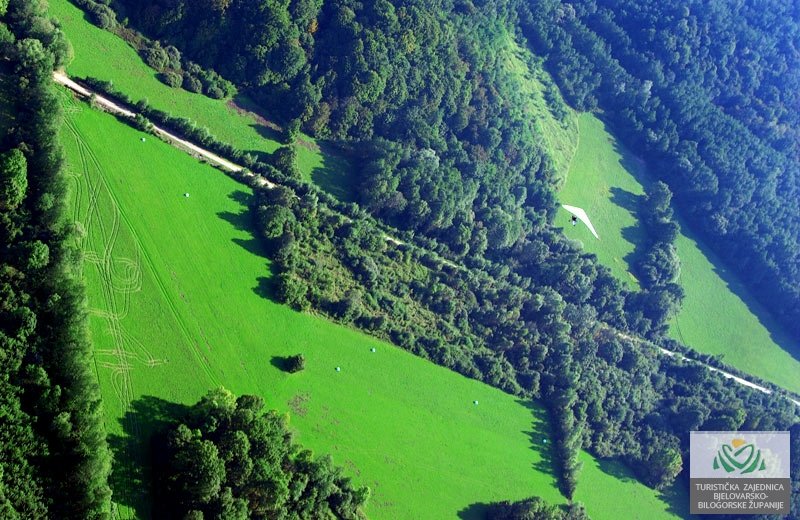
Visit the Tourist Board of Bjelovar - Bilogora county and keep up to date with all the news about our offer and interesting happenings that we are preparing for this summer.
Welcome!
Photographs taken from: photos of family farm Šapić - resort and wine shop Vinia, family farm Mihoci (photos of food), Tourist Board of Bjelovar - Bilogora county (panoramic photos) and family farm Vlajinić
Photo: TZ BBZ
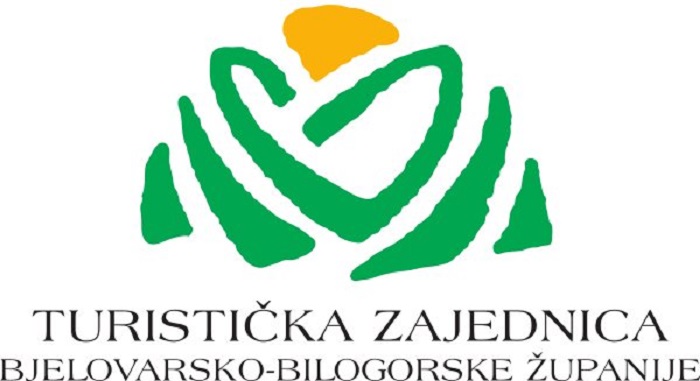
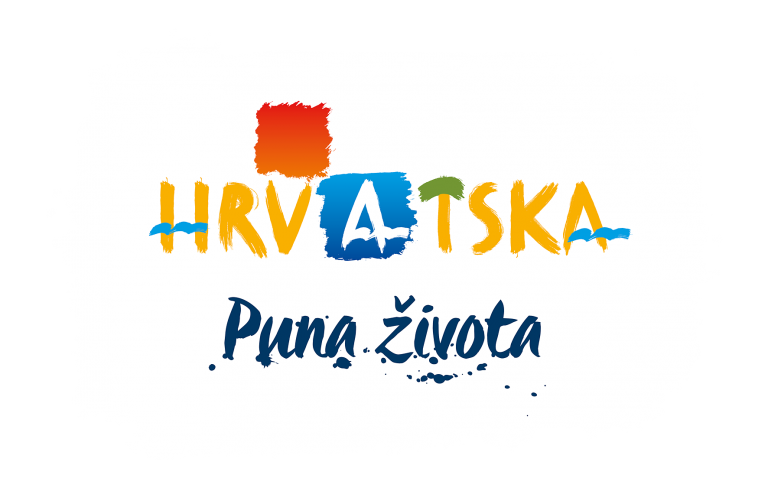
[:]
New face of traditional cuisine – a culinary spring tour across Sisak county
WHETHER YOU ARE PLANNING TO WATCH EXHIBITION IN THE CITY OR TO TAKE A WALK ALONG RURAL HOUSEHOLDS IN ITS SURROUNDINGS – SISAK IS WELL WORTH OF INVESTIGATION
'There is no sincerer love than the love of food', this is a conclusion brought a long time ago by the English dramatist, novelist, critic and publicist George Bernard Shaw.
In the spirit of this profoundly true and tried saying, this spring numerous places will open the doors of long forgotten smells and tastes from the old chest of traditional Croatian dishes. This is a great move if you consider the fact that interest for good culinary tradition has never been higher among tourist visitors, and even among domestic population.
This trend is also reflected in the fact that growingly popular culinary blogs, web portals and magazines have started to show great interest and affection for the revival and publishing of long forgotten recipes, many of which end up as most popular recipes of the month on respective web sites.
Following these tourist trends which promote the traditional gastronomy as the key element of tourist offer, city of Sisak went towards the revitalisation of its most tasteful inheritance – the revival of culinary tradition!
DO NOT MISS THE OPENING OF OLD TOWN FORTRESS AND EXHIBITION OF TRADITIONAL DISHES FROM SISAK COUNTY

When?
Exhibition 'In search for the best cuisine – authentic Sisak county dishes'; 23rd of May 2016 in 7pm.
This is a unique exhibition based on the field research about preparation methods of traditional and indigenous dishes from Sisak area. It will explain and present old recipes to its visitors in a fun and educative way, taking them back to past times.
Organisers explained that, to enrich the restaurant offer, they brought these old recipes back into daylight. They are determined to prevent them, and their tastes and smells, from being forgotten.
And for people who decide to visit, we recommend not to miss the essential feature of this area - Nature park Lonjsko polje with its restaurant offer, where traditional dishes are prepared using the original old recipes.

Further on, we bring you recommendations for places that offer authentic cuisine in Nature park Lonjsko polje. Did you know there is a theme pathway in this area designed to be a reminder of the old way of life? It stretches through north part of Lonjsko polje and its life giving surroundings, vineyard hills of Moslavina and river Sava.
Its purpose is to emphasize differences between past and present, because most pathways that once led over the fields do not exist any more, bridges over rivers have decayed over time, main river channels are regulated, but river branches and seducing places near Lonja are kept. It connects two areas in a new way and tells romantic stories from the past, making the way to replicas of frontiersmen's watchtowers where service men spent most of their lives.
 HOTSPOTS RECOMMENDATIONS FOR RURAL HOUSEHOLDS AND FAMILY FARMS IN SISAK AREA
HOTSPOTS RECOMMENDATIONS FOR RURAL HOUSEHOLDS AND FAMILY FARMS IN SISAK AREA
'Traditions – Čigoč' runs a restaurant with 80 seating places. Experience the ambience surrounded by massive oak tables and chairs and try different traditional dishes from Posavina.
'Traditions – Čigoč' offers ready made dishes like roe deer goulash, fish paprikash and 'posavski lonac'. With each dish we recommend a specialty called 'Čigočica', which is home made bread stuffed with domestic cheese and cream.
'Traditions – Čigoč' also prepares top class dishes baked in 'peka' and different sorts of local fishes among which we recommend carp and perch fish prepared in a special way. http://www.tradicije-cigoc.hr/
'Pansion Tišina' in Lonja is a lovely traditional restaurant surrounded by the most beautiful part of Nature park Lonjsko polje – Lonja river. There are many activities one can enjoy in the vicinity of the restaurant. It is possible to walk around, to visit Nature park Lonjsko polje, or to go fishing. Six very attractive bicycle routes (total 310 kilometers of pathways) connect the Posavina corridor of Lonjsko polje with river Una and Moslavina. Bicycle routes in Nature park Lonjsko polje are easy and pleasant to ride, especially fitted for family tourism and recreation.
ETHNO VILLAGE OLD LONJA
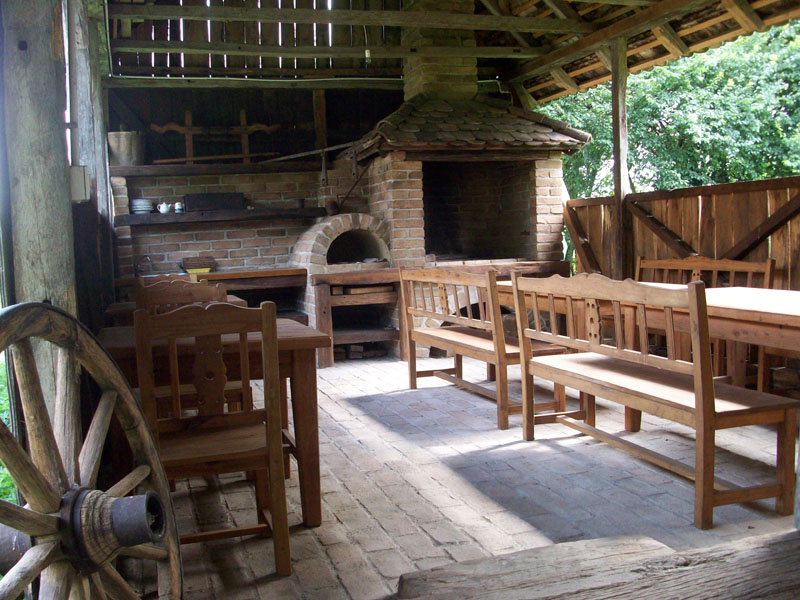
Ethno village Old Lonja - http://www.etnoselo-staralonja.com/o-nama/ - after you have finished with activities in nature you can enjoy the traditional cuisine of this farm in beautiful Lonja. The owners words well describe the atmosphere of the place: 'Lonjsko polje is easy to love, you just need to come here and feel it, smell flowers in the field, pass through the streets of Posavina, have a swim at sandy beaches of river Sava, wake up in dew covered mornings, feel the smell of fish roasted in traditional way, admire the horses in sunset and many more things indescribable with words'.
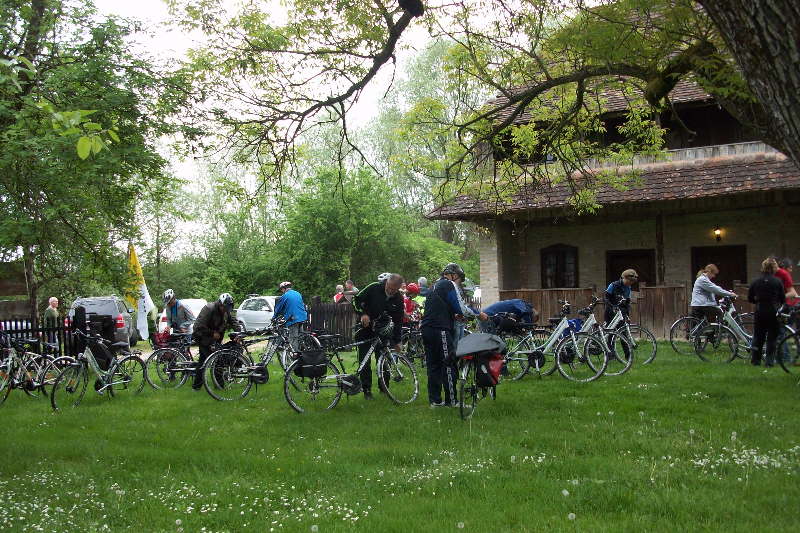
Lonjsko polje is a cure for the soul of modern urbanised human who has long ago forgotten what it means to be relaxed or how have our bygone ancestors lived. It is a great choice for anyone who wants to experience something different, something more beautiful, something to remember for the rest of your life, something that becomes a reason to always come back to Lonjsko polje and Ethno village Old Lonja.
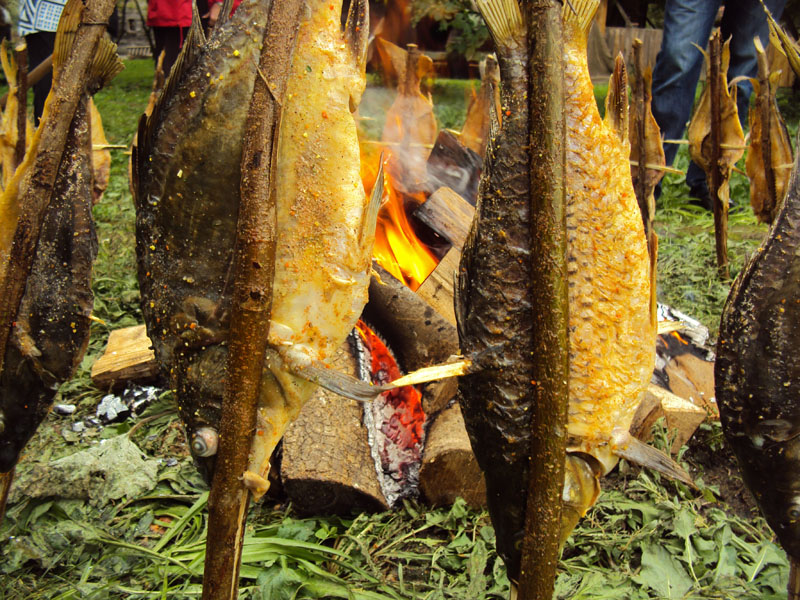
Photo: Etno selo Stara Lonja
Family farm Veselić – culinary offer of this lovely farm includes specialties prepared exclusively from ecologically grown organic ingredients. They also organise different educational workshops about organic agriculture, environmental protection and sustainable development, all accompanied by presentation and tasting of domestic products – organic jams, marmalades and juices. Visitors can also enjoy the atmosphere of village celebration with a glass of wine and good old tambura – indigenous instrument similar to mandolin.
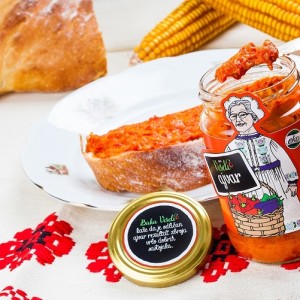
Photo;OPG Veselić
The offer of rural households is really impressive, so we invite you to explore it additionally by clicking on this link and get there as soon as possible with your family and friends. This is a dream destination for cuisine lovers and nature lovers. Numerous households offer an ideal ratio of service and price while the service is available throughout the summer.
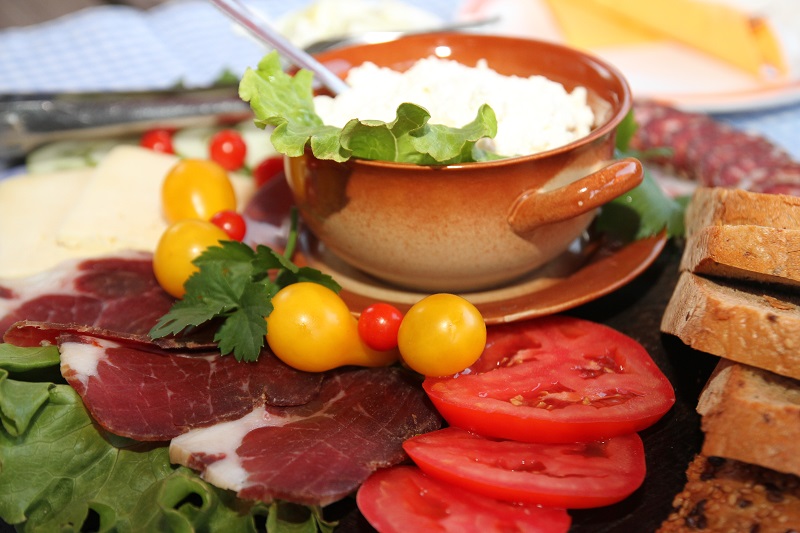
If you want to stay in the city of Sisak, you have a big choice of restaurants where you can enjoy your meal in beautiful ambience, whether it is the yard of Old town fortress or the shore of river Kupa or carefully arranged gardens in the city center. We invite you to taste the dishes which were served to the emperor Franjo 1st during his visit to Sisak.

Or you can explore all the attractions of charming roman architecture. You can find them, among other things, on this link: http://www.sisakturist.com/hr/stranica/znamenitosti/46. It is also a great idea to visit the city market of Sisak where you can find a variety of seasonal products of all colors and shapes. Here you can get acquainted with the offer of this region and be a part of local events and happenings. Sisak is really a beautiful and harmonious small city which constantly vibrates with life and energy of its inhabitants and thanks to their creativity and hard work, they learned how to be excellent hosts to their visitors and ever growing number of hikers.

Photo: Gradska tržnica Sisak
In the end we bring you some practical recipes and traditional method of drying fish:
Recipe: Carp fish on 'rašlje'
Ingredients:
1-1,5 kg carp fish
Salt
Red paprika
Preparation:
Clean and wash the fish. Cut the carp on the back so you get a big leaf, add salt and leave for a while to absorb. Rub the inner side with red paprika. From willow tree wood make 'rašlje' and stick the carp laterally on top of it. Stick the bottom of rašlje into the ground near the pile of cinders and turn from time to time so the fish gets done from both sides.
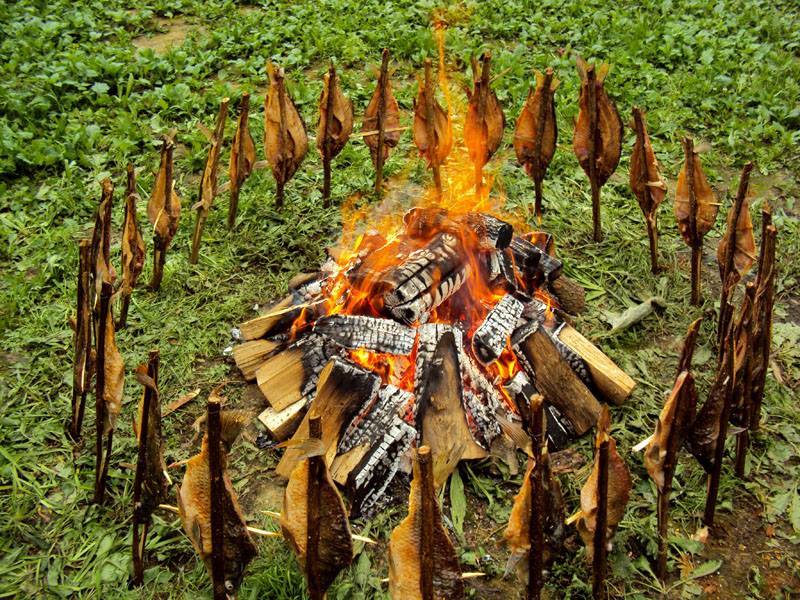
Last but not the least – read something about tradition of fish smoking on the attics of Lonjsko polje:
Smoked fish – forgotten delicacy of Lonjsko polje (by Vladimir Pajtlar)
In past times, residents of Lonjsko polje have dried fish on their attics. These were times when the fish was abundant, so not all the catch could be consumed immediately. And refrigeration was not yet available.
Best fishes for drying and smoking are carp, pike and bream fish, between 1,5 and 2 kilograms. Fish should be cut along the back, salt should be added and the fish put in brine for 5 days. After that fish should hang in the attic in cold and airy space. It should drain there for a day. Next day fish should be smoked for maximum of 2 hours. Dry willow tree branches should be used to make the smoke. Fish should be smoked every other day until it has been smoked for a total of five times. After that it should stay on the attic for at least ten days. The color of fish should become dark red. Before preparation skin must be removed. Dried fish can be eaten raw or fried on some fat. Bon appetit!
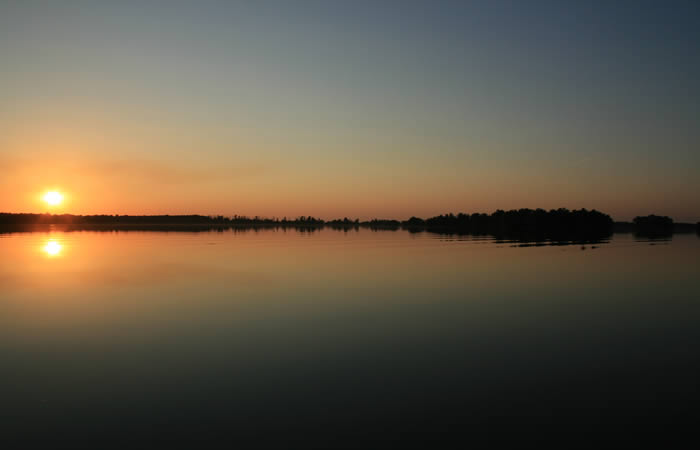
For more information about the culinary customs, culinary exhibition and places for good food visit the official pages of Sisak Tourist board. Welcome!
Photo credit: SISAK TOURIST BOARD
